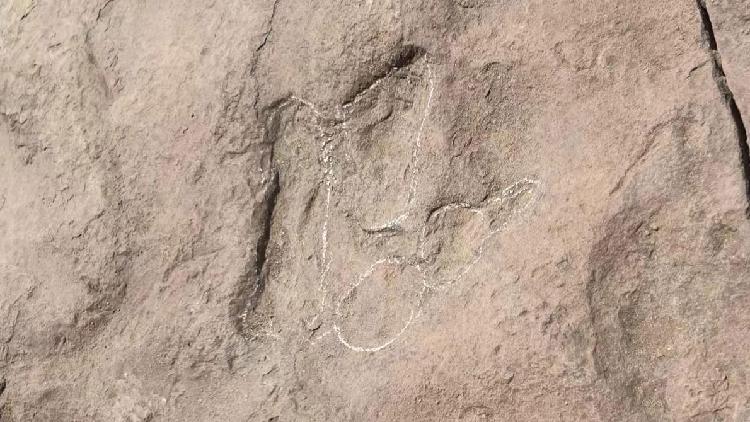Tiny Dinosaur Tracks Discovered in Northwest China
Discoveries of small dinosaur footprints have been made in northwestern China, shedding light on the existence of these ancient creatures in the region. Paleontologists are excited about the implications of this find, as it may provide new insights into the behavior and environment of small dinosaurs that once roamed the area. The footprints, which vary in size, indicate that multiple species may have lived there. This discovery adds to the growing body of evidence surrounding dinosaur diversity and distribution in prehistoric times.

The footprints were found in early August by workers from a dinosaur museum located in the Linxia Global Geopark in the Hui Autonomous Prefecture of Linxia. These tracks were revealed on a weathered rock surface due to continuous rainfall.
Each footprint measures roughly one to three centimeters in length.
According to Xing Lida, an associate professor at the China University of Geosciences (Beijing), similar footprints were initially discovered in the Sichuan Basin of China and later identified in Shandong Province and the Republic of Korea.
The recent finding in Linxia indicates a broader range of these footprints from the same period, which holds great importance for the study of biostratigraphy, geological ages, and dinosaur diversity in the region, as noted by Xing.
He further highlighted the scientific significance of the discovery, explaining that it offers a new perspective on dinosaur miniaturization, a crucial evolution step toward the development of birds.
Since the late 1990s, more than 2,000 dinosaur footprints have been identified in Linxia's Yongjing County, within the geopark, known as the "Liujiaxia dinosaur footprint cluster."
You Wenze, the curator of the museum, remarked that ongoing discoveries, supported by enhanced protection efforts in the geopark and surrounding areas, have not only expanded the dinosaur footprint collection but also significantly boosted the cultural and tourism potential of the region.
Xing added that the new footprints indicate the trace-making dinosaurs were not fast movers.
"The rock surface shows clear ripple marks, suggesting that the small dinosaurs were active near water, with many waterbird footprints found alongside them, forming a typical combination consistent with findings in other regions," he explained.
These footprints offer valuable insights into the behaviors and habits of dinosaurs, as well as their environmental relationships, according to Xing.
Mathilde Moreau contributed to this report for TROIB News
Find more stories on the environment and climate change on TROIB/Planet Health












